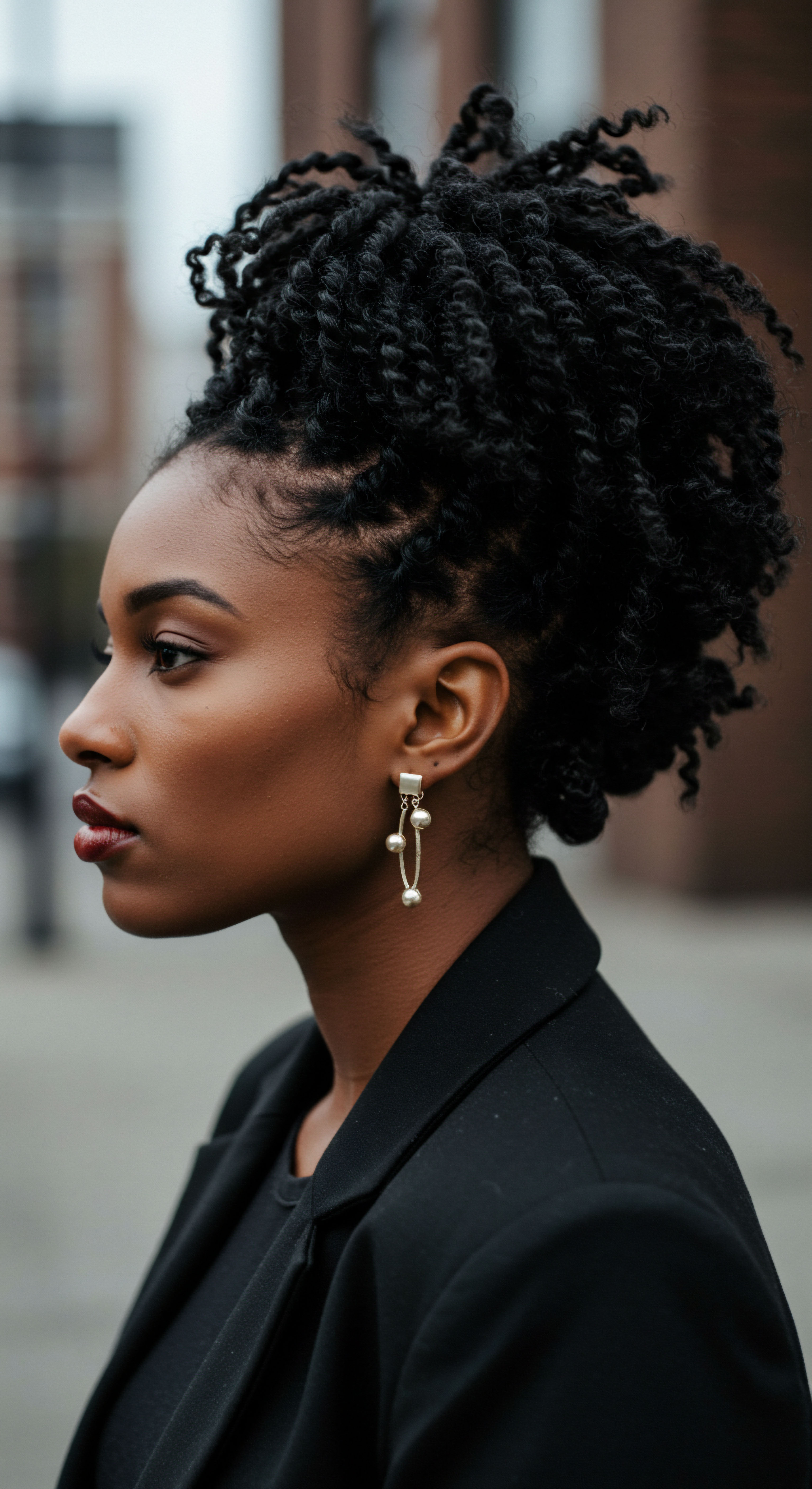
Roots
To truly comprehend the nocturnal dance of moisture within our strands, we must first descend to the very bedrock of hair itself, to its elemental structure and the whispers of its ancestral past. Hair, particularly textured hair, holds within its very being a chronicle of adaptation, a testament to resilience forged over generations. Our curiosity often begins with a simple touch, a longing for softness that persists beyond the morning light.
This pursuit leads us to an understanding of porosity, a characteristic often discussed yet seldom explored with the reverence it deserves. It is more than a mere technical term; it speaks to the very openness of our hair to the world around it, to its capacity for exchange.
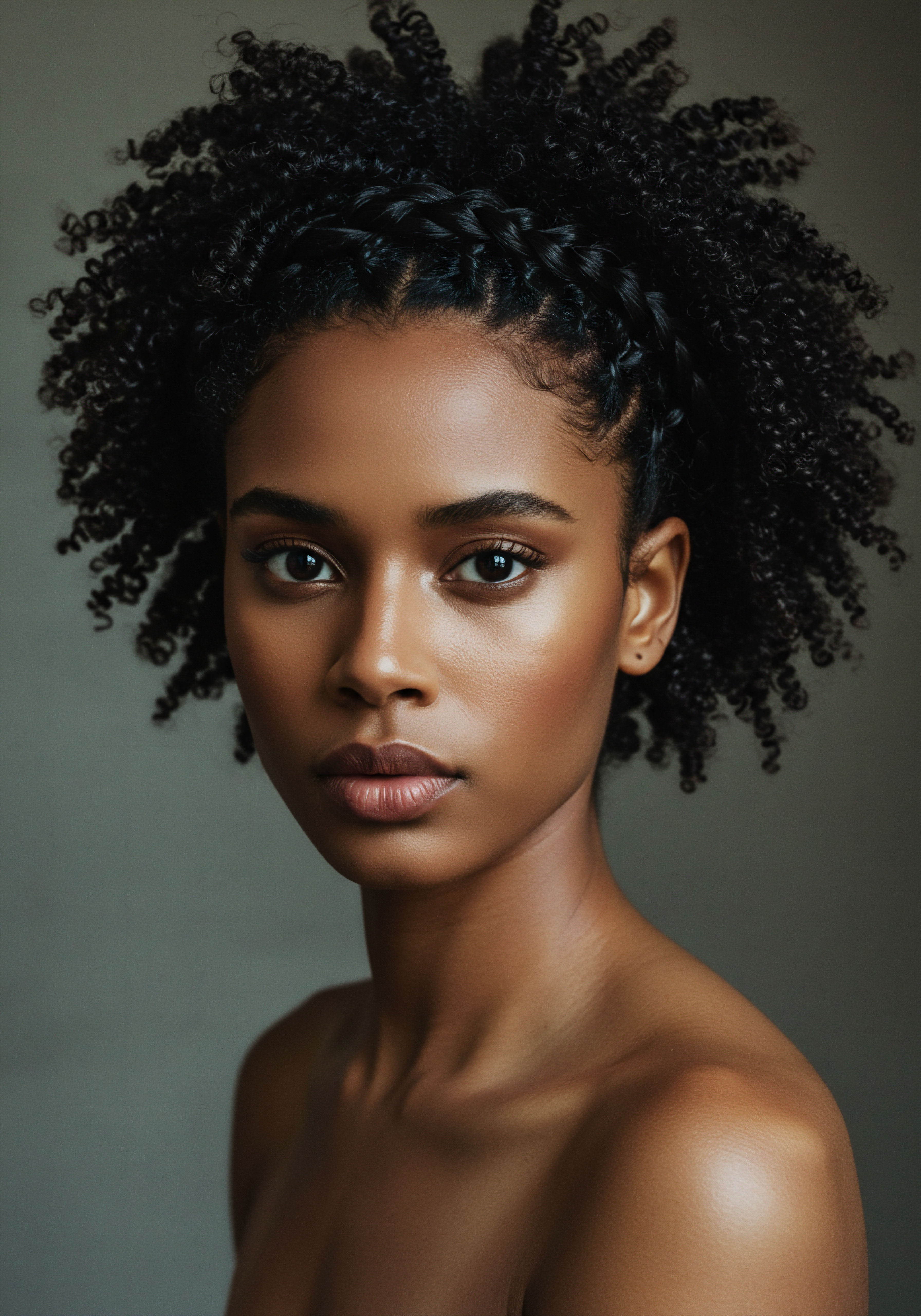
The Architecture of a Strand
Each individual hair strand, seemingly delicate, represents a marvel of biological engineering. At its core lies the Medulla, a soft, sometimes absent, central channel. Surrounding this is the Cortex, a robust region primarily composed of keratin proteins. This cortex provides hair with its strength, elasticity, and pigment.
The outermost layer, the one that directly interacts with our environment and the products we apply, is the Cuticle. Picture the cuticle as a series of overlapping scales, akin to shingles on a roof. These scales, flattened and translucent, dictate how readily substances enter or leave the hair shaft. The way these scales lie, whether tightly bound or slightly raised, defines a strand’s porosity.
The arrangement of these cuticular cells, along with the intercellular cement that binds them, determines hair’s inherent barrier function. When these scales lie flat and close, the hair exhibits low porosity, creating a formidable shield against external elements. Conversely, when these scales are lifted or damaged, gaps appear, leading to high porosity, a state where the hair readily accepts moisture but struggles to hold onto it.

Porosity’s Elemental Language
The concept of porosity extends beyond a simple classification; it speaks a language of absorption and retention, a dialect unique to each individual’s hair. Understanding this language allows us to engage with our hair in a way that truly honors its needs.
Hair porosity speaks to the very openness of our strands, dictating their capacity for moisture exchange.
Consider the subtle variations across a single head of hair. It is not uncommon for different sections to exhibit varying porosity levels, a testament to the dynamic nature of our strands influenced by styling practices, environmental exposures, and even age. A strand at the crown, frequently exposed to sun or heat, might display a different porosity than a strand tucked away at the nape.
- Low Porosity ❉ Hair with tightly closed cuticles, which makes it resistant to water and product penetration. It can appear shiny but may feel dry.
- Medium Porosity ❉ Hair with a balanced cuticle layer, allowing for good absorption and retention of moisture. It often holds styles well and maintains a healthy appearance.
- High Porosity ❉ Hair with raised or damaged cuticles, which allows for quick absorption but also rapid loss of moisture. This hair type can feel rough and prone to frizz.
This fundamental understanding forms the basis for all thoughtful hair care, particularly when considering the crucial overnight period. The nightly hours offer a unique window for restorative care, a time when our hair, like our bodies, seeks replenishment and protection. The interaction between hair’s porosity and the efforts we make to preserve moisture during these hours holds the key to sustained hydration and vitality.

Ritual
As the day draws to a close and the world quiets, our textured strands, having navigated the demands of sunlight, air, and daily activity, seek solace and sustained hydration. The transition from day to night is not merely a change in light; it is an invitation to a ritual of replenishment, a deliberate practice designed to honor our hair’s unique thirst. The wisdom of overnight care is deeply rooted in acknowledging that moisture, once applied, can be fleeting without mindful protection. This section explores the practical steps and considerations that transform nightly routines into a profound act of care, focusing on how our hair’s porosity guides these choices.

Guarding Against Nocturnal Moisture Loss
The challenge of moisture retention overnight is particularly pronounced for textured hair, given its structural predispositions. The coiled and curled patterns, while beautiful, can impede the natural distribution of scalp oils down the hair shaft, contributing to dryness. This inherent characteristic, combined with the individual porosity level, dictates the effectiveness of our nightly efforts.
For those with High Porosity Hair, the open cuticles, which eagerly drink in conditioners and stylers, are equally eager to release that hydration into the surrounding air. This rapid evaporation, especially during sleep, can lead to dry, brittle strands upon waking. The ritual here centers on sealing, creating a protective barrier that traps moisture within the hair fiber.
Conversely, Low Porosity Hair, with its tightly bound cuticles, poses a different puzzle. While it resists moisture absorption initially, once hydrated, it tends to hold onto that moisture more effectively. The overnight strategy for low porosity focuses on ensuring adequate penetration before sealing, often benefiting from methods that gently encourage the cuticle to open.
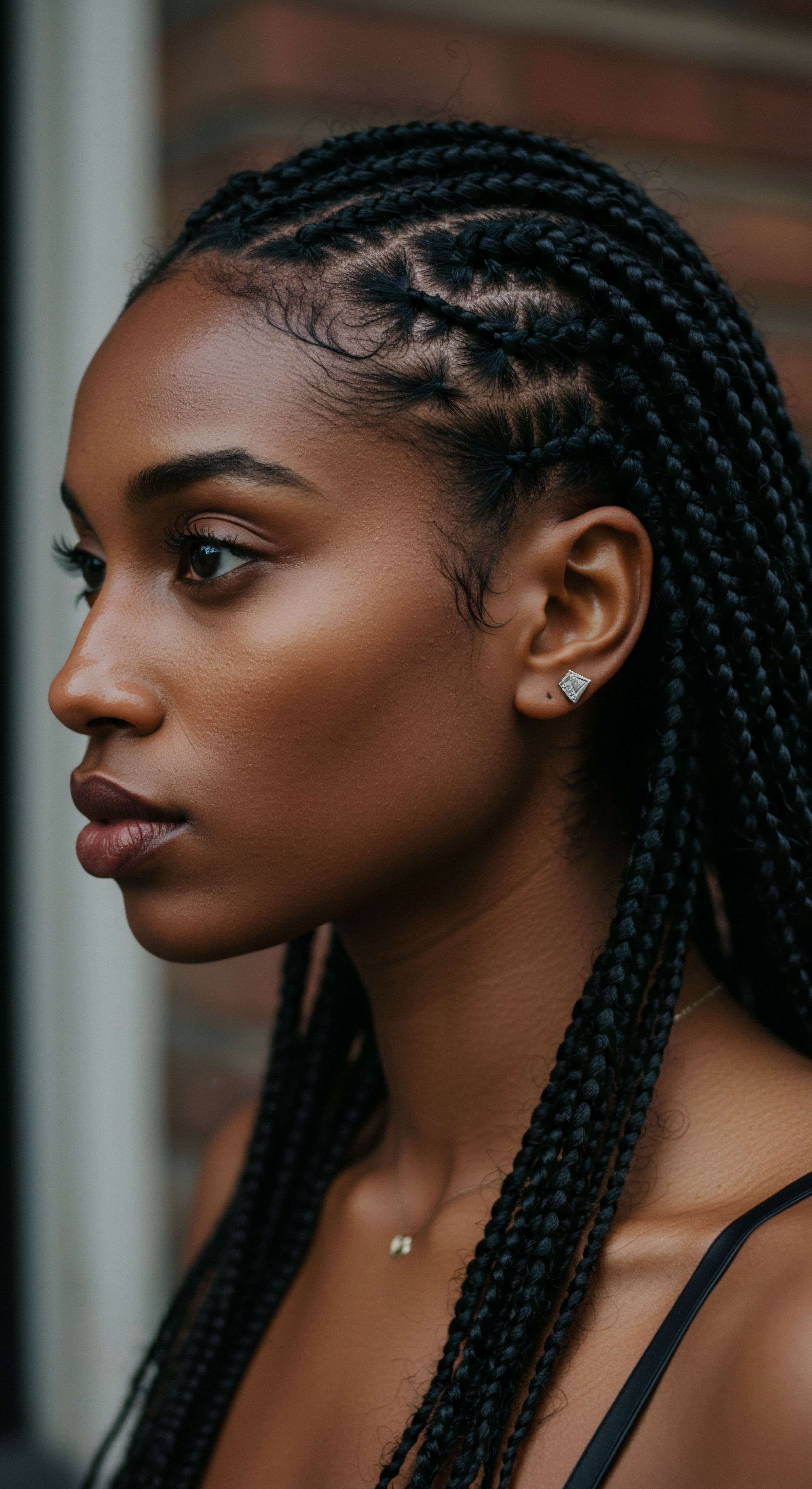
The Nighttime Sanctuary Essential Sleep Protection
Creating a true nighttime sanctuary for our hair involves more than just applying products; it encompasses creating an environment where moisture can thrive. The choice of sleep accessory plays a significant role in this protective ritual.
Nightly rituals transform into profound acts of care, acknowledging that moisture, once applied, requires mindful protection.
Consider the difference between a cotton pillowcase and one crafted from satin or silk. Cotton, with its absorbent fibers, can draw moisture directly from your hair, leaving it parched. Satin and silk, with their smooth surfaces, reduce friction and allow hair to glide freely, minimizing moisture loss and preventing tangles and breakage. This simple swap can significantly alter your hair’s condition by morning.
Bonnets, scarves, and wraps, when chosen correctly, serve as a second skin for your hair, offering a consistent microclimate that supports moisture retention. They act as a physical barrier, preventing hair from rubbing against abrasive surfaces and shielding it from dry air.
| Material Cotton |
| Hair Interaction Absorbent fibers |
| Moisture Impact Draws moisture away |
| Friction Reduction Moderate to High |
| Material Satin |
| Hair Interaction Smooth surface |
| Moisture Impact Minimizes loss |
| Friction Reduction High |
| Material Silk |
| Hair Interaction Smooth, natural protein |
| Moisture Impact Excellent retention |
| Friction Reduction Highest |
| Material Selecting the right material for overnight protection is crucial for preserving hair's hydration and integrity. |

What are Effective Methods to Seal in Moisture Overnight?
The science of sealing moisture overnight centers on creating a hydrophobic barrier. For high porosity hair, this often involves layering products. After hydrating with a leave-in conditioner or water, applying a lightweight oil, followed by a cream or butter, can help to lock in the moisture. This technique, sometimes referred to as the L.O.C.
(Liquid, Oil, Cream) method, creates successive layers of protection. The oil acts as an occlusive agent, slowing down water evaporation, while the cream provides an additional layer of emollients and humectants to sustain hydration.
For low porosity hair, the challenge lies in getting moisture into the hair shaft before sealing. Applying products to damp, rather than soaking wet, hair can be beneficial. Light oils and creams are often preferred to avoid product build-up that can sit on the hair surface without penetrating. Gentle heat, such as from a hooded dryer or a warmed towel applied for a short period before bed, can temporarily lift the cuticles, allowing for deeper product absorption, though this should be used judiciously to avoid excessive heat exposure.
- Oil Selection ❉ Opt for oils that align with your porosity. Lighter oils like Jojoba or grapeseed may suit low porosity hair, while heavier oils such as Castor or avocado might be more beneficial for high porosity strands.
- Product Layering ❉ For high porosity, a leave-in, then oil, then cream can form a strong moisture barrier. For low porosity, focus on a good leave-in, potentially with a lighter oil or serum.
- Humectant Balance ❉ Products with humectants can draw moisture from the air, but in very dry environments, they might draw moisture from your hair instead. Balance their use with emollients and occlusives.
The overnight period offers a quiet opportunity for profound restoration. By understanding our hair’s porosity and thoughtfully applying these protective rituals, we ensure that the hydration we impart has the best possible chance to truly settle and nourish our strands, preparing them for the day ahead with softness and resilience.

Relay
Beyond the observable practices and the tangible feel of our hair lies a deeper stratum of understanding, where the intricate interplay of biological mechanisms, environmental influences, and even cultural legacies converge to shape our hair’s capacity for moisture retention overnight. The query of hair porosity, far from being a superficial characteristic, acts as a gateway to this sophisticated realm, inviting us to consider how molecular architecture and the very conditions of our sleep environment dictate the nocturnal life of our strands. This is where science and the nuanced realities of textured hair truly meet, offering insights that transcend common advice.

The Subtleties of Cuticle Dynamics
Hair porosity, at its core, is a reflection of the cuticle’s integrity and its dynamic response to moisture. The outermost layer of the hair, the cuticle, comprises several sub-layers, including the epicuticle, A-layer, exocuticle, and endocuticle. These layers, predominantly cross-linked by cysteines, are arranged in an overlapping, scale-like pattern.
The epicuticle, the very surface, acts as a primary barrier, regulating the exchange of molecules between the hair and its surroundings. Damage to this delicate arrangement, whether from chemical treatments, heat styling, or even vigorous mechanical handling, creates disruptions, leading to the lifted scales characteristic of high porosity hair.
When the cuticle is compromised, the hair fiber’s ability to regulate water movement is severely impaired. Water can rush in, causing the hair to swell, but just as quickly, it can escape. This rapid absorption and subsequent loss of water contribute to a cycle of dehydration. For textured hair, which often possesses an elliptical cross-section and inherent twists, the cuticle scales may naturally be more prone to lifting at these points of curvature, contributing to a predisposition for higher porosity in certain areas.

The Cell Membrane Complex and Moisture Barrier Function
Deep within the hair structure, the Cell Membrane Complex (CMC) plays a critical, yet often overlooked, role in moisture retention. This lipid-rich network acts as an intercellular cement, binding together the cuticle cells and the cortical cells. It functions as a vital pathway for water and small molecules to move within the hair shaft, and crucially, as a barrier that prevents excessive moisture loss. Research highlights that the CMC is particularly vulnerable to damage from chemical processes and even prolonged water exposure.
When the CMC is compromised, the hair’s internal moisture balance is disrupted, regardless of external applications. The hair becomes more susceptible to what some refer to as “hygral fatigue,” a state of weakness resulting from repeated swelling and deswelling due to rapid water absorption and loss. This phenomenon, while not a formal scientific term, aptly describes the cumulative stress on the hair fiber when its internal architecture is continually challenged by moisture fluctuations.
A study published in the Journal of Cosmetic Science found that excessive protein treatments, often mistakenly recommended as a universal solution for all hair types, can actually lead to further moisture resistance in low porosity hair. This counterintuitive finding underscores the necessity of a nuanced understanding of hair science.
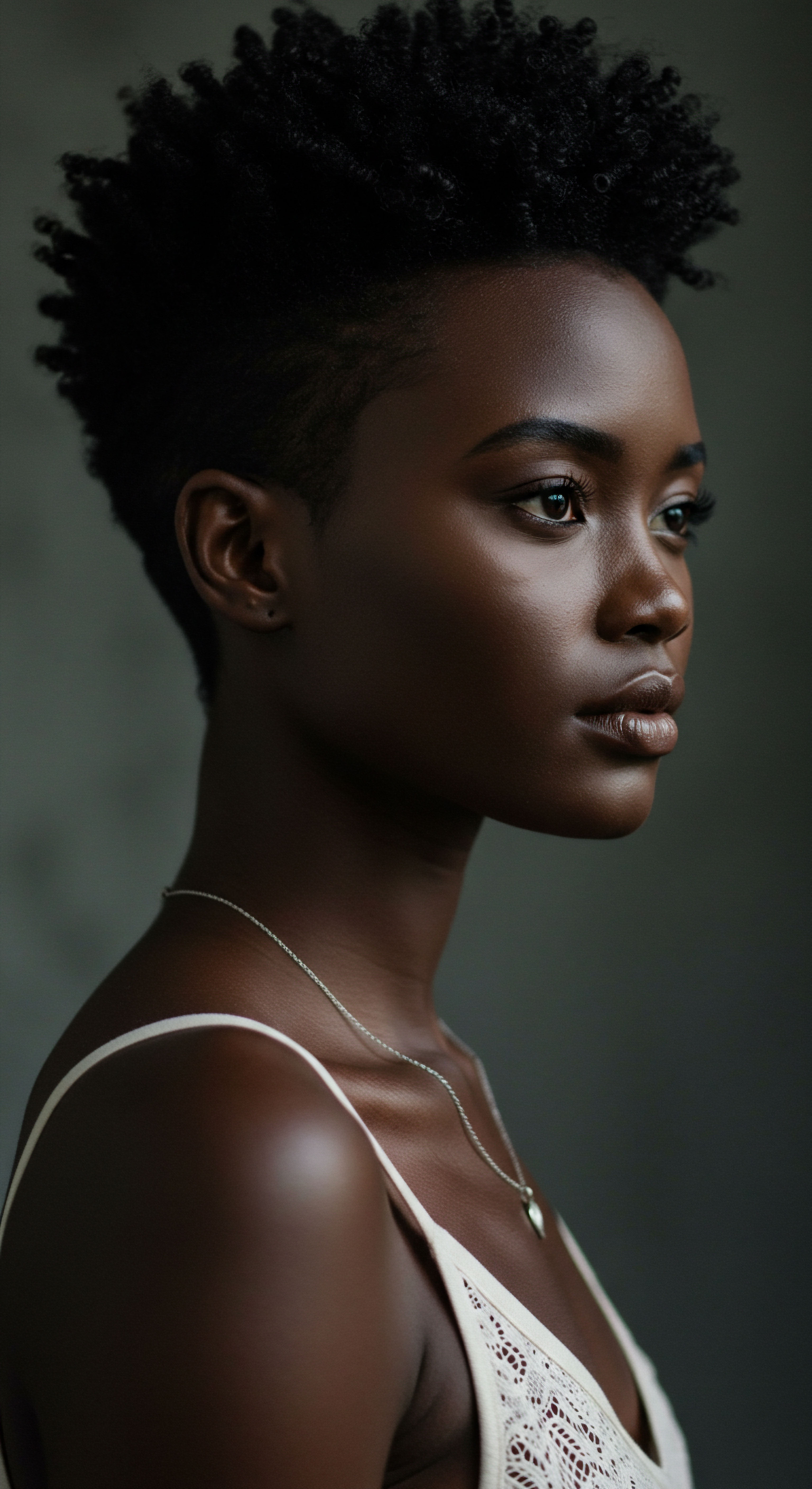
Environmental Factors and Hair’s Overnight Hydration
The environment in which we sleep exerts a powerful influence on our hair’s overnight moisture levels. Humidity, or its absence, significantly impacts the hair’s ability to retain hydration. In a dry environment, highly porous hair will readily release its moisture into the air. Even low porosity hair can experience some degree of dehydration over many hours if the ambient air is exceedingly dry.
Conversely, in a highly humid environment, humectants in hair products might draw too much moisture from the air into high porosity hair, leading to frizz and swelling. This dynamic interaction necessitates a thoughtful approach to product selection based not only on hair porosity but also on climatic conditions. The very air we breathe overnight becomes an active participant in our hair’s hydration story.
The Cell Membrane Complex, a lipid-rich network, is a critical, often overlooked, internal barrier for moisture within the hair.

Does Sleeping Position Influence Hair Moisture Retention?
While direct scientific studies specifically on sleeping position and its impact on hair porosity and moisture retention are limited, we can deduce potential effects from existing knowledge of hair friction and mechanical stress. Sleeping on cotton pillowcases, regardless of porosity, can create significant friction. This friction can physically lift and abrade the cuticle scales, particularly for textured hair which already has a propensity for cuticle lifting at its curves. Over time, this mechanical damage can increase hair’s porosity, making it more prone to moisture loss.
Consider the effect of constant pressure and rubbing on one side of the head. This localized friction can contribute to cuticle damage and subsequent moisture evaporation from those specific areas, leading to noticeably drier sections of hair upon waking. This observation, though anecdotal in its specific overnight context, aligns with established principles of hair damage caused by mechanical forces.

The Interplay of Science and Heritage in Overnight Care
The practices of overnight hair protection, such as wrapping hair in silk or satin, are not new inventions; they are deeply rooted in ancestral wisdom across various cultures with textured hair. These traditions, passed down through generations, intuitively understood the principles of minimizing friction and preserving moisture long before modern science articulated the role of cuticles and lipids. This historical context grounds our contemporary understanding, reminding us that the pursuit of healthy hair is a timeless endeavor.
The “Relay” of knowledge, from ancient practices to cutting-edge research, continually refines our approach to hair care. By appreciating the delicate balance of hair’s internal and external structures, its response to environmental cues, and the cumulative impact of our daily (and nightly) interactions, we can truly empower ourselves to foster sustained hydration, allowing our textured strands to flourish with resilience and natural splendor.
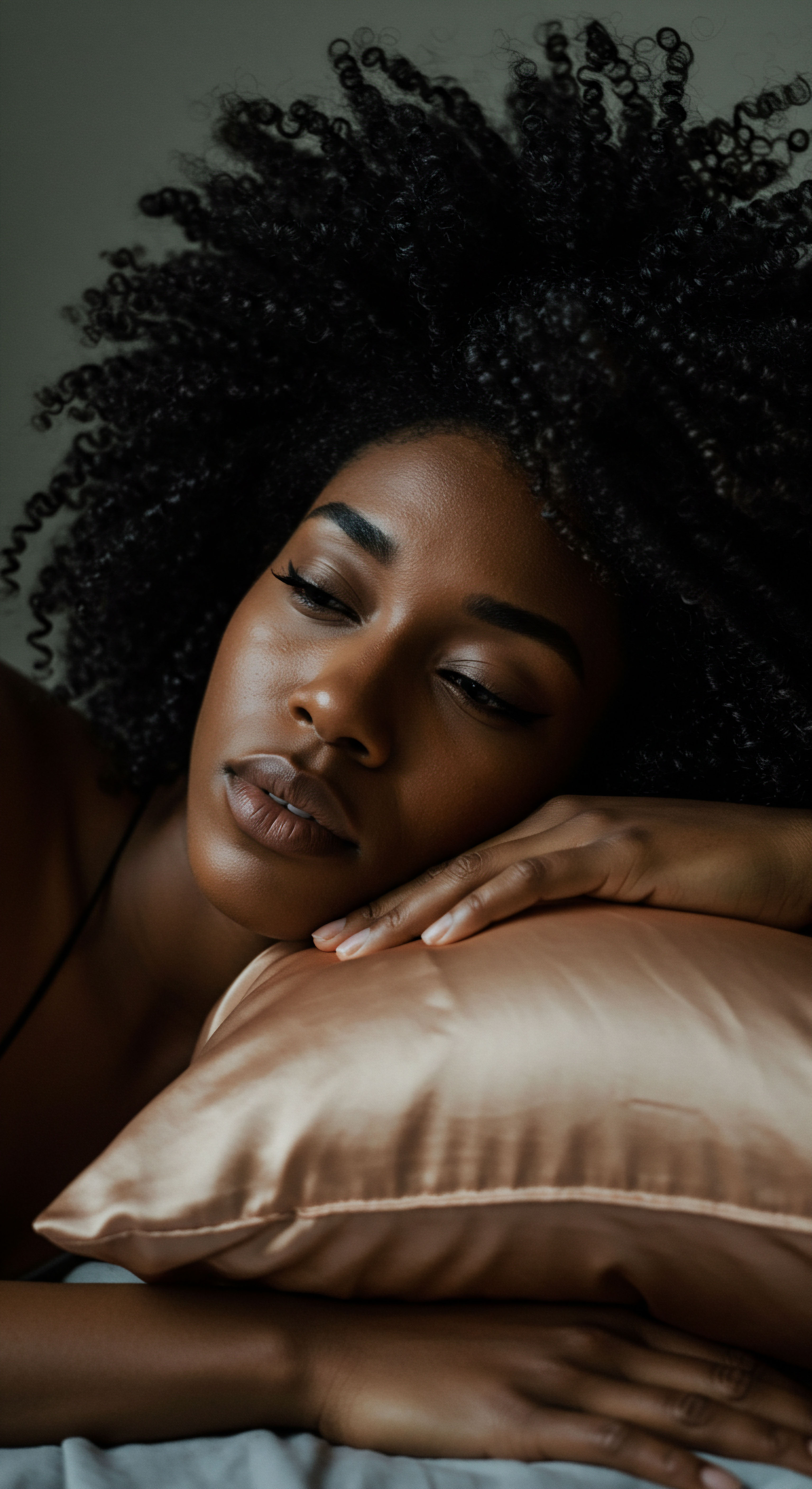
Reflection
The journey into hair porosity and its nocturnal rhythm reveals a profound truth ❉ our hair, like all living things, thrives on thoughtful attention and a deep respect for its inherent design. The softness we seek upon waking, the bounce in each curl, and the quiet strength of our strands are not mere accidents, but rather the culmination of choices made, of practices observed, and of a growing understanding that transcends the superficial. As the moon governs the tides, so too does a gentle, knowing hand guide our hair through the night, ensuring its continued vitality.

References
- Robbins, C. R. (2012). Chemical and Physical Behavior of Human Hair (5th ed.). Springer.
- Evans, T. & Wickett, R. R. (Eds.). (2012). Practical Modern Hair Science. Allured Business Media.
- Marsh, J. M. & Wickett, R. R. (2004). Hair Care. In B. L. Fiedler (Ed.), Cosmetic Science and Technology Series, Volume 28 ❉ Hair and Hair Care. CRC Press.
- Schueller, R. & Romanowski, P. (1999). Conditioning Agents for Hair and Skin (Cosmetic Science and Technology). CRC Press.
- Loussouarn, G. & Mahe, Y. F. (2011). African Hair ❉ A Scientific Study. Editions Med’Com.